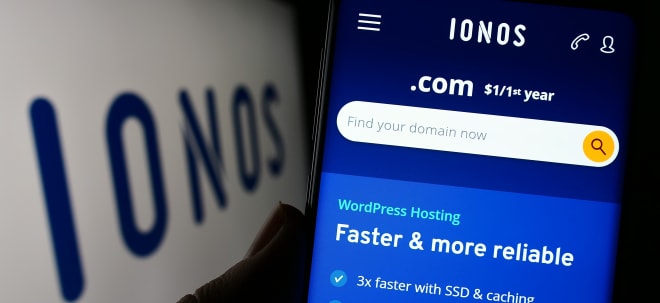Clinical data presentations at the European Association of Urology (EAU) 2025 congress highlight the benefits of using Blue Light Cystoscopy in bladder cancer
Werte in diesem Artikel
OSLO, Norway, March 24, 2025 /PRNewswire/ -- Photocure ASA (OSE: PHO), the Bladder Cancer Company, announces two abstract presentations at the 2025 European Association of Urology congress (EAU) in Madrid, Spain, highlighting the benefits of Blue Light Cystoscopy (BLC®), notably its impact on recurrence risk and ability to help urologists make the best bladder cancer management choices for their patients.
The EAU annual meeting is one of the largest international meetings in the urology calendar, showcasing the latest and most relevant clinical and scientific advancements in this area of patient care. This year's event was held on March 21-24, 2025, and attracted urologists from all over the world. Photocure participated with its Hexvix® product designed for better detection and resection of bladder tumors under the theme that "Seeing is believing". As in the past two years, Photocure will make 2025 EAU bladder cancer session highlights available to healthcare professionals after the event, by means of video interviews with the presenters of these sessions at the Photocure booth B28. This successful initiative is once again supported by two of the leading names in Bladder Cancer in Europe, Prof. M. Rouprêt, APHP, Sorbonne University Paris, France and Prof. P. Gontero, Division of Urology, University of Studies of Torino, Italy.
In addition to this educational activity, the EAU scientific program prominently features Photocure's Hexvix product and/or the blue light cystoscopy procedure in which it is used. In particular, two notable abstract presentations were:
The impact of PDD on recurrence and progression in BCG-treated NMIBC* patients: a nationwide follow-up study (Abstract session 39: Sunday, March 23rd, 5:15pm CET – NMIBC: Advances in diagnosis and follow-up)
This nationwide cohort study investigates the association of PDD on recurrence and progression risk in BCG-treated NMIBC patients, using Danish registry data from 2009-2022 assessing patients treated with BCG for primary NMIBC.
In the study, 4318 patients from the Danish registry were identified with a first-time NMIBC diagnosis that were treated with BCG. Of the study subjects, 2388 (55%) of patients were diagnosed with the assistance of PDD. Basic demographics, stage and grade was comparable between the two groups. There were no differences in BCG-response across exposure groups. Age adjusted relative risk of recurrence was 0.88 (0.79 – 0.97) and 0.97 (0.89 – 1.05) at 1 and 5 years, respectively for the PDD-group compared to the non PDD-group. Age adjusted relative risk for progression was 0.93 (0.73 – 1.19) and 1.01 (0.84 – 1.21) at 1 and 5 years, respectively for the PDD-group.
The authors conclude that, since the BCG-response across exposures were equal, the reduced risk of recurrence at 1 year was likely due to the detection effect of PDD: "The present study did not support the hypothesis of PDD modulating the BCG-response in NMIBC patients, suggesting a different mechanism for the impact of PDD on recurrence and progression in BCG-treated NMIBC patients."
Read the abstract: https://urosource.uroweb.org/resource-centres/EAU25/262112/abstract
Trans Urethral Laser Ablation of bladder tumors under local anesthesia: A prospective study of pain and recurrences
(Abstract session 50: Monday, March 24th, 12:30pm CET – NMIBC: Innovations and outcomes 2)
This study investigated the short- and long-term oncology safety regarding recurrence and progression as well as perioperative pain after office-based Transurethral Laser Ablation (TULA) or fulguration by PDD-assisted flexible cystoscopy.
This prospective observational study enrolled eligible patients from August 2017 to June 2022 at Oslo University Hospital. 329 patients were enrolled, with a median age of 74 years. The median NRS (numeric rating scale) for perioperative pain was 4 (IQR: 3-5) for both the laser and fulguration group. The 12-month relapse-free survival (RFS) was 91% overall, 93% for fulguration, and 89% for laser ablation. The 12-month PFS was 94% for the laser group and 97% for the fulguration group.
The authors conclude that office-based TULA under local anesthesia using PDD-assisted flexible cystoscopy is associated with low perioperative pain and does not compromise short- or long-term RFS or PFS. Therefore, it is a feasible option regarding perioperative pain and oncological safety.
Read the abstract: https://urosource.uroweb.org/resource-centres/EAU25/262903/abstract
"These new study data presented at EAU continue to emphasize the importance of using Blue Light Cystoscopy in the diagnostic pathway for bladder cancer. Minimally invasive procedures are on the rise and these abstracts also address data gaps in the long-term use of BLC in high-risk patients, where accurate staging determines all further treatment decisions", said Anders Neijber, Chief Medical Officer of Photocure. "BLC has been shown to clinically increase TURBT quality, more accurately stage disease, and enable better recurrence monitoring to help improve the lives of patients with bladder cancer."
During the EAU Congress, on March 21, Photocure, in collaboration with Olympus, also hosted a well-attended scientific event on 'Precision Imaging in Bladder Cancer: Focus on Blue Light Cystoscopy'. The event, chaired by Ms. Bernadett Szabados (UCLH, London, UK) and Professor Christian Beisland (Haukeland University Hospital, Bergen, Norway), brought together leading experts who exchanged insights on the importance of advanced imaging technologies in urology. This collaboration between Photocure and Olympus underscores a shared commitment to innovation in cancer imaging and improving patient outcomes.
*NMIBC: Non-muscle invasive bladder cancer
**TURBT: trans-urethral resection of bladder tumors
Note to editors:
All trademarks mentioned in this release are protected by law and are registered trademarks of Photocure ASA.
This press release may contain product details and information which are not valid, or a product is not accessible, in your country. Please be aware that Photocure does not take any responsibility for accessing such information which may not comply with any legal process, regulation, registration or usage in the country of your origin.
About Bladder Cancer
Bladder cancer ranks as the 8th most common cancer worldwide – the 5th most common in men – with 1 949 000 prevalent cases (5-year prevalence rate)1a, 614 000 new cases and more than 220 000 deaths in 2022.1b
Approx. 75% of all bladder cancer cases occur in men.1 It has a high recurrence rate with up to 61% in year one and up to 78% over five years.2 Bladder cancer has the highest lifetime treatment costs per patient of all cancers.3
Bladder cancer is a costly, potentially progressive disease for which patients have to undergo multiple cystoscopies due to the high risk of recurrence. There is an urgent need to improve both the diagnosis and the management of bladder cancer for the benefit of patients and healthcare systems alike.
Bladder cancer is classified into two types, non-muscle invasive bladder cancer (NMIBC) and muscle-invasive bladder cancer (MIBC), depending on the depth of invasion in the bladder wall. NMIBC remains in the inner layer of cells lining the bladder. These cancers are the most common (75%) of all BC cases and include the subtypes Ta, carcinoma in situ (CIS) and T1 lesions. In MIBC the cancer has grown into deeper layers of the bladder wall. These cancers, including subtypes T2, T3 and T4, are more likely to spread and are harder to treat.4
1 Globocan. a) 5-year prevalence / b) incidence/mortality by population. Available at: https://gco.iarc.fr/today, accessed [February 2024].
2 Babjuk M, et al. Eur Urol. 2019; 76(5): 639-657
3 Sievert KD et al. World J Urol 2009;27:295–300
4 Bladder Cancer. American Cancer Society. https://www.cancer.org/cancer/bladder-cancer.html
About Hexvix®/Cysview® (hexaminolevulinate HCl)
Hexvix/Cysview is a drug that preferentially accumulates in cancer cells in the bladder, making them glow bright pink during Blue Light Cystoscopy (BLC®). BLC with Hexvix/Cysview, compared to standard white light cystoscopy alone, improves the detection of tumors and leads to more complete resection, fewer residual tumors, and better management decisions.
Cysview is the tradename in the U.S. and Canada, Hexvix is the tradename in all other markets. Photocure is commercializing Cysview/Hexvix directly in the U.S. and Europe and has strategic partnerships for the commercialization of Hexvix/Cysview in China, Chile, Australia, New Zealand and Israel. Please refer to https://photocure.com/partners/our-partners for further information on our commercial partners.
About Photocure ASA
Photocure: The Bladder Cancer Company delivers transformative solutions to improve the lives of bladder cancer patients. Our unique technology, making cancer cells glow bright pink, has led to better health outcomes for patients worldwide. Photocure is headquartered in Oslo, Norway and listed on the Oslo Stock Exchange (OSE: PHO). For more information, please visit us at www.photocure.com/news
CONTACT:
For further information, please contact:
Dan Schneider
President and CEO
Photocure ASA
Email: ds@photocure.com
Erik Dahl
CFO
Photocure ASA
Tel: +4745055000
Email: ed@photocure.com
Media and IR enquiries:
Geir Bjørlo
Corporate Communications (Norway)
Tel: +47 91540000
Email: geir.bjorlo@corpcom.no
This information was brought to you by Cision http://news.cision.com
The following files are available for download:
Release |
Ausgewählte Hebelprodukte auf Photocure AS
Mit Knock-outs können spekulative Anleger überproportional an Kursbewegungen partizipieren. Wählen Sie einfach den gewünschten Hebel und wir zeigen Ihnen passende Open-End Produkte auf Photocure AS
Der Hebel muss zwischen 2 und 20 liegen
| Name | Hebel | KO | Emittent |
|---|
| Name | Hebel | KO | Emittent |
|---|
Nachrichten zu Photocure ASAshs
Analysen zu Photocure ASAshs
Keine Analysen gefunden.

